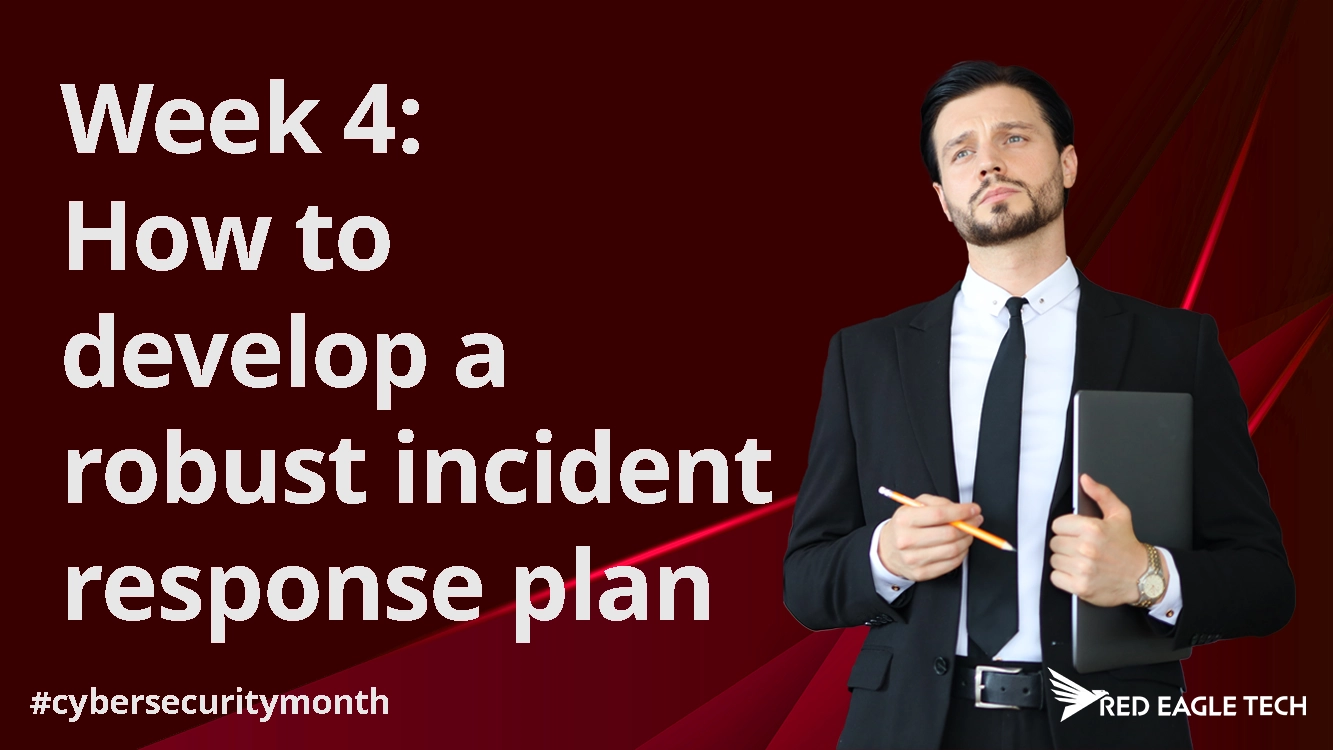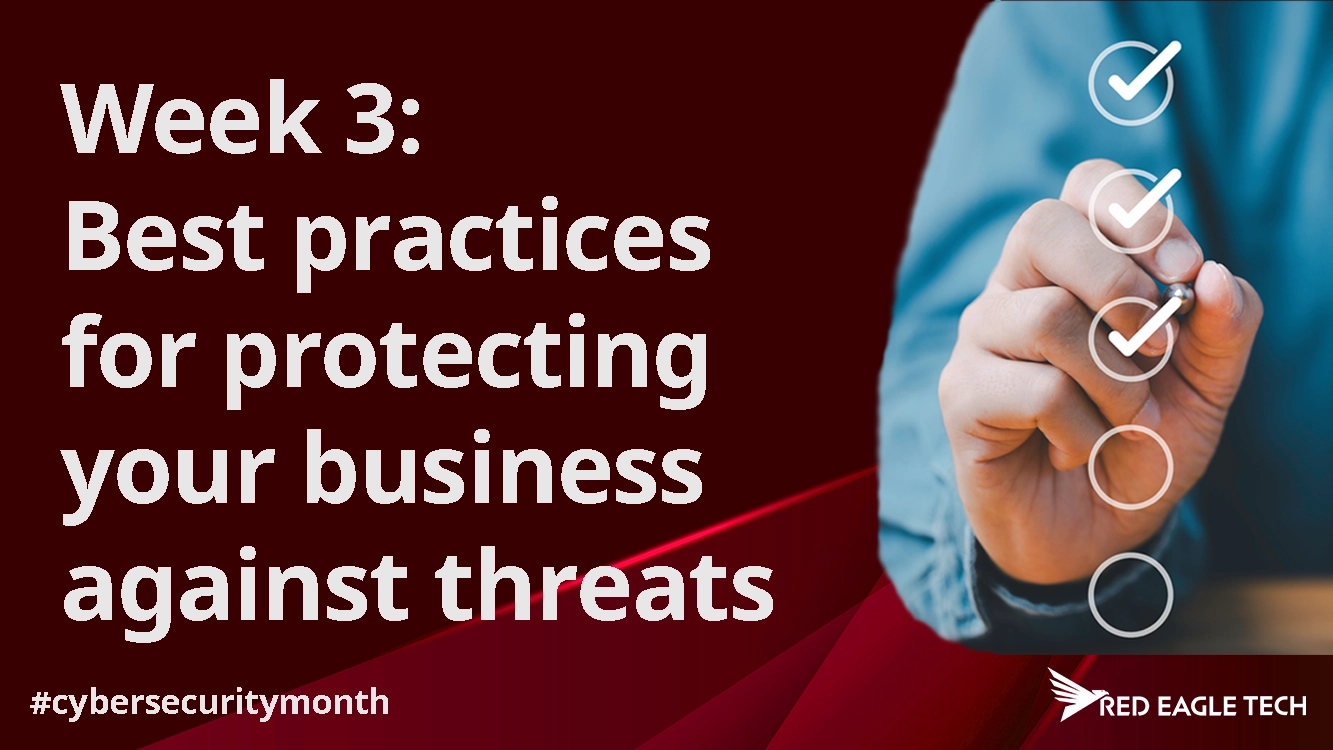
Cybersecurity week 5: What's new in cybersecurity and how your business should prepare
As we come to the end of our Cybersecurity Awareness Month series, it's time to look ahead and explore the future of cybersecurity. To give your business the best protection from new threats, it's wise to stay ahead of emerging trends and technologies. In this last post, we look at the latest advancements in cybersecurity, including AI-driven solutions, advanced threat detection methods, and new regulatory requirements. We'll also give you some tips on how you can prepare for these future developments.
1. AI-Driven Security Solutions
Emerging Trend
Artificial Intelligence (AI) and Machine Learning (ML) are increasingly serving as useful tools for cybersecurity. Security solutions that use AI can analyse a lot of data, in real-time, identify any patterns, and detect any abnormalities that could indicate a threat. These technologies can spot threats faster, respond automatically and make your security all-round more effective. The rise in AI-related data breaches has accelerated the need for AI-driven security solutions.
Impact
AI can help businesses stay one step ahead of sophisticated attacks by providing advanced threat intelligence, reducing response times, and minimising human error. AI-driven systems can also learn about and adapt to any new threats, making them extremely useful as threats continue to grow increasingly sophisticated. Our IT Operations team can help implement these advanced solutions.
How can you prepare?
- Invest in AI Tools: Evaluate and invest in AI-driven security solutions that align with your business needs and objectives.
- Integrate AI with Existing Systems: Ensure that AI tools are integrated seamlessly with your current security infrastructure to maximise their effectiveness.
- Stay Informed: Keep up with advancements in AI technology and think about how they can be used to enhance your cybersecurity.
2. Advanced Threat Detection Methods
Emerging Trend
We're seeing a shift towards smarter security systems that are able to spot unusual activity and potential threats. Unlike old-school security which just looks for already known threats, these new technologies can detect any strange behaviour in your network. Think of it like you've got a security guard who can see someone acting strangely in a shop, rather than having nobody there and just relying on a list of known shoplifters. This proactive approach is essential for countering the common security threats businesses face today.
Impact
By putting into practice advanced threat detection techniques, businesses can understand more about potential threats, respond much more rapidly, and reduce the risk of successful attacks. These new security methods can find weak spots in your system before hackers do, and help you protect against them before they become a real issue. Having a robust incident response plan in place complements these detection methods.
How can you prepare?
- Adopt Advanced Detection Tools: Implement tools and technologies that provide enhanced visibility and detection capabilities. (Microsoft Defender for Business, CrowdStrike Falcon).
- Enhance Threat Intelligence: Invest in threat intelligence services and platforms that offer real-time insights into emerging threats and vulnerabilities. (Cisco Talos, Microsoft Security Intelligence).
- Develop a Threat Hunting Strategy: Establish a proactive threat hunting approach to continuously search for hidden threats and vulnerabilities within your network. (Microsoft Sentinel, Splunk).
3. Evolving Regulatory Requirements
Emerging Trend
As data privacy and cybersecurity concerns grow, regulatory requirements are becoming more stringent. Data protection laws like the UK GDPR and frameworks like NIST Cybersecurity Framework 2.0 are pushing businesses to improve their security practices. Our Technology Governance services can help ensure you stay compliant with these evolving requirements.
Impact
Businesses need to ensure they are sticking to these regulations to avoid legal penalties and damage to customer trust. Non-compliance can result in huge fines, legal consequences, and damage to your business's reputation which can be hard to come back from. Following the security best practices we outlined earlier is a good starting point for compliance.
How can you prepare?
- Stay Updated on Regulations: Regularly review and stay informed about changes in cybersecurity and data privacy regulations relevant to your industry and location.
- Implement Compliance Measures: Develop and implement policies and procedures to ensure compliance with regulatory requirements.
- Conduct Regular Audits: Perform regular audits and assessments to verify that your business's practices align with current regulatory standards.
Staying ahead of emerging technologies and trends, adopting advanced detection methods and ensuring compliance with evolving regulations will help you to future-proof your cybersecurity. Your business will be ready to tackle whatever security challenges you face.
That wraps up our Cybersecurity Awareness Month series. We hope you've picked up some useful tips along the way to better protect your business. If you need help with cybersecurity, our friendly team of experts at Red Eagle Tech are always here to help. Contact us today to discuss your specific cybersecurity needs.










